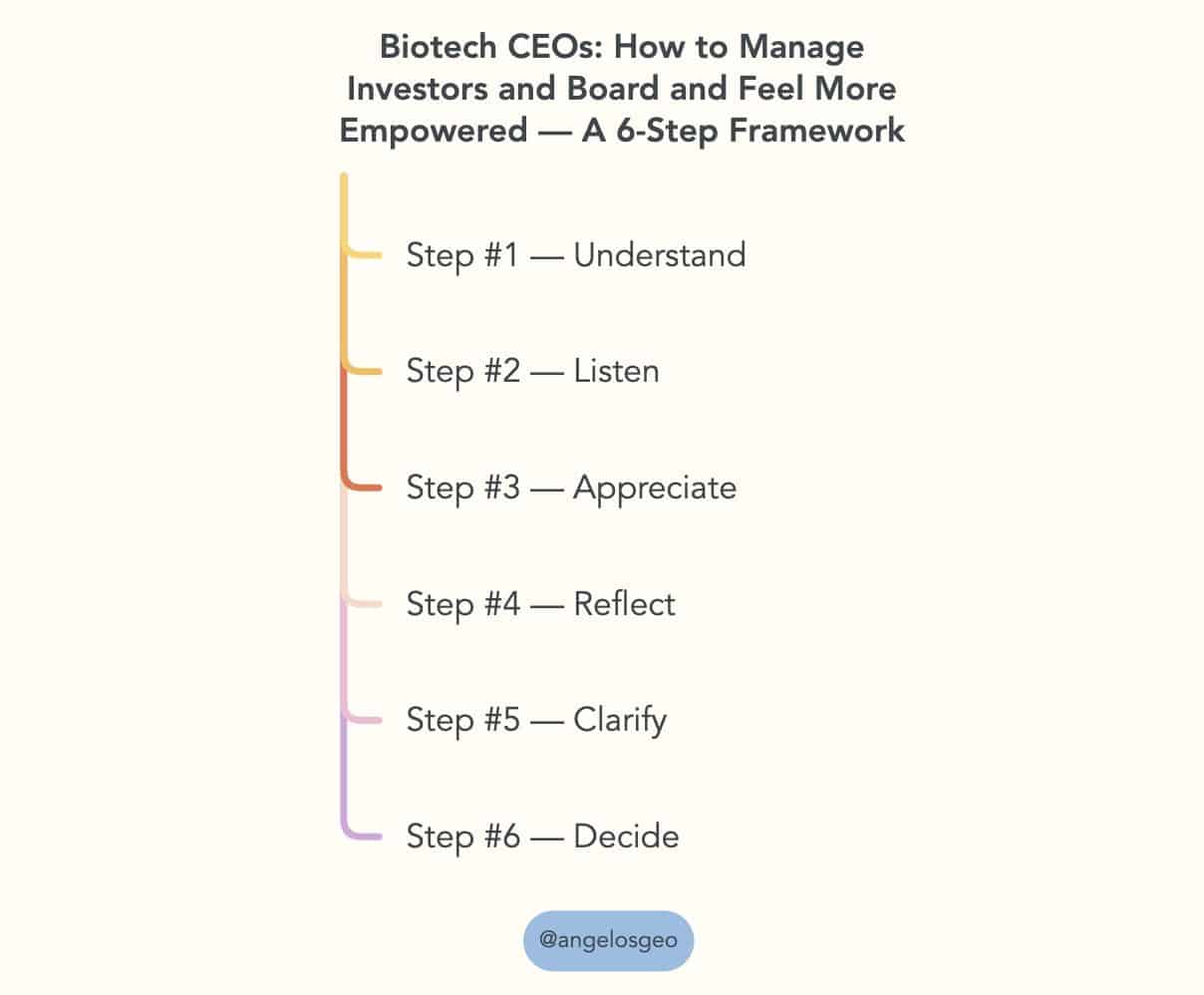Biotech CEOs and management team, I understand you and empathise with you when you’re getting pulled all over the place by your board and investors. Here is my 6-Step Framework towards feeling more empowered and less overwhelmed.
Step #1 — Understand
First, you have to understand that the job of your investors and board is exactly that, i.e. bombard you with hundreds of different—and sometimes contradicting or opposing—opinions.
The more diverse the board, the more diverse their opinions—which is a healthy and desirable thing! A lot of investors/board members will often say, “Don’t listen to me!” but that won’t stop them from telling you what to do the next day!
Again, that’s their job and you’re lucky to have active and passionate partners offering perspective and keeping you sharp.
I say partners, because, to me, the investors and the board can be extremely valuable partners to the company. These partners know very well that they’re not the ones who run the company and that they don’t have access to all the information and operating view that you have. All they want is you to be a strong team and make the right decisions.
Step #2 — Listen
Listen to all different opinions with an open mind. Where is this person coming from? Put aside all your filters, convictions and preconceptions. Ask more questions, learn, and take notes. Remember that your investors and board, like every human being on earth, want to feel heard and valued. They don’t expect you to do what they say but they do expect you to at least listen.
Step #3 — Appreciate
Thank them for their advice and tell them that you’re going to seriously consider it. Also, tell them that you’ll need to think more to come up with a plan. You don’t have to commit to anyone or anything right away. They don’t want that either!
Step #4 — Reflect
Does their advice make sense? Why? Why not? Is there something that you can see that they’re not seeing?
Be open to changing your view. It is a strength to show agility of thinking and responsiveness to other views.
Step #5 — Clarify (and listen)
Reconnect with them and explain how you see the situation. Help them see what you can see that they’re probably not seeing. Be open to being offered more perspective once they have an updated view and go back to Step #2 if necessary.
Obviously, you can’t go back to the board for every little decision because you’ll become inefficient; you have to go at 100 miles per hour! At the same time, you have to be radically transparent. You don’t want to keep your investors and board in the dark. When in doubt, share. They will buy in a lot more when they know that there’s no secret being kept from you.
Step #6 — Decide
After having considered all options, decide what’s best for the company. Tell your investors and the board why you think this is the “best” decision. Be transparent about the risks, potential outcomes and available future options. The best decision will not always turn out the right one! They know that. Ask for their support and create buy-in.
Again, your board wants you to feel autonomous and empowered. Your relationship is a delicate balance of “power” and influence. The board manages you but you also manage the board, i.e. you manage their concerns and fears by showing that you know what you’re doing.
Finally, accept that it won’t always be easy to stay grounded and help everyone understand and support your decisions. Your job is one of the most difficult jobs, and one of the reasons is that you have so many bosses, i.e. the board, investors, and all other stakeholders!
With that said, take whatever works for you in this framework and bin the rest! You are running the show and your board, investors and myself, all want you to succeed!
